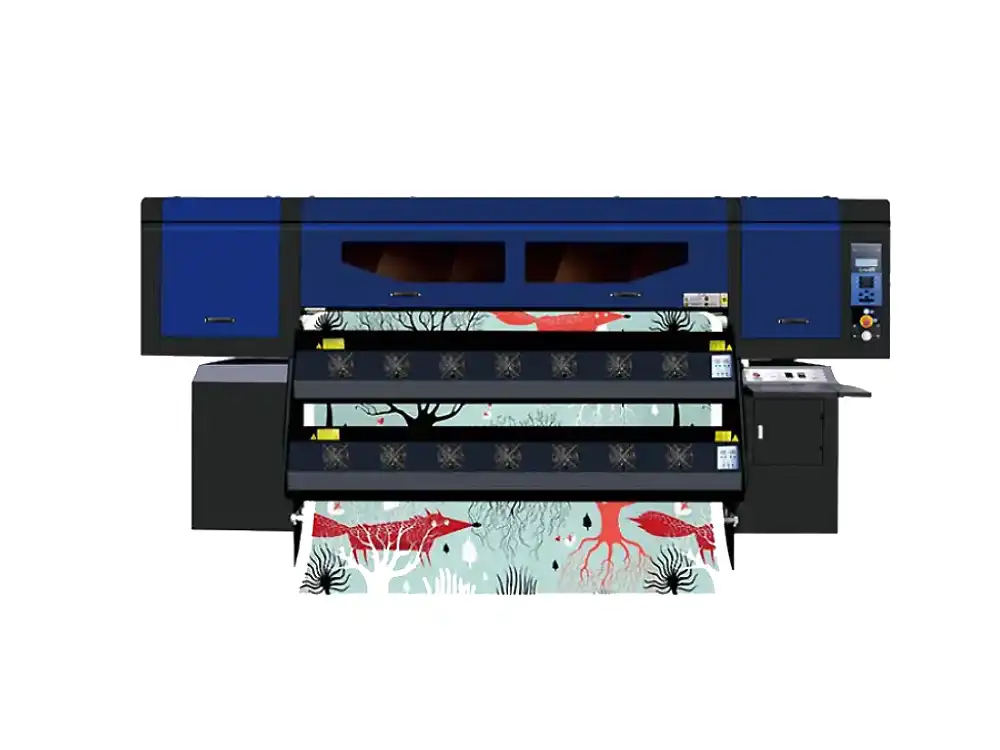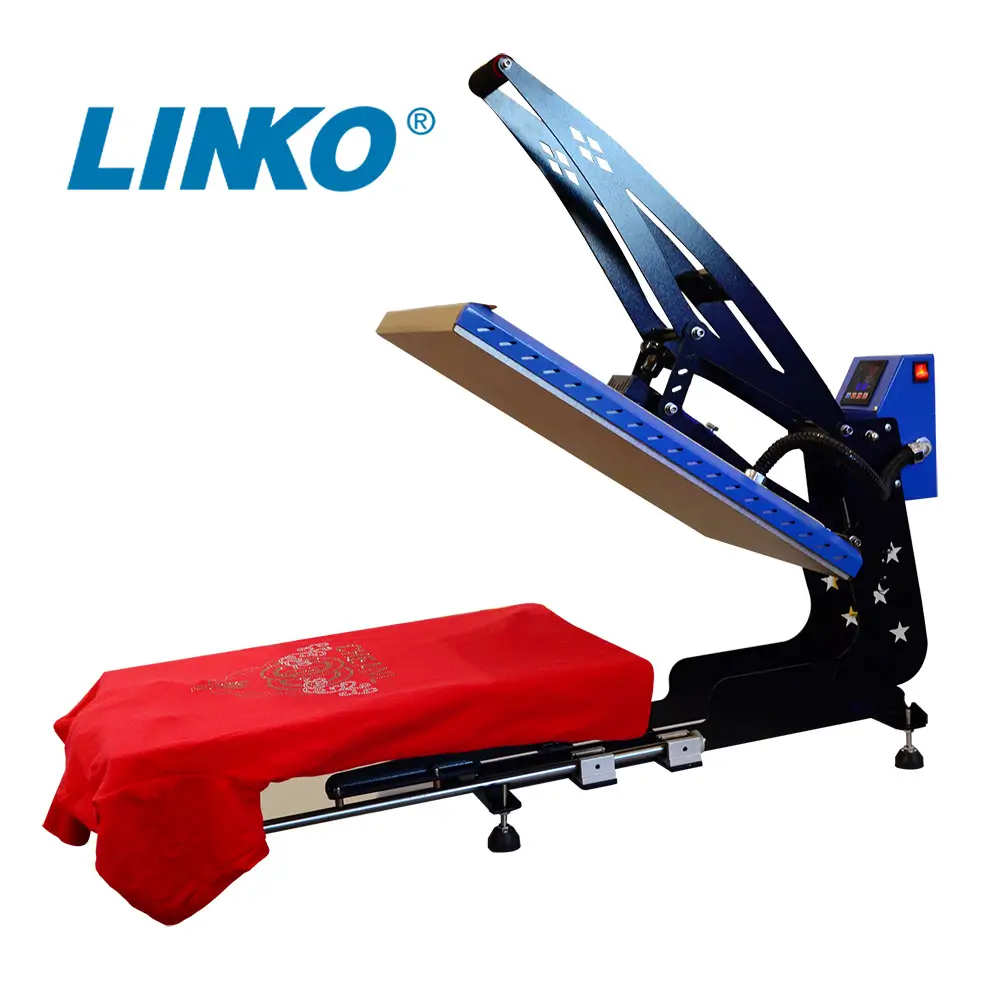Introduction
Printing enthusiasts continue to innovate ways to fill the voids of many techniques. One product of this innovation is the DTF sublimation hack.
It’s understood that as durable as sublimation prints are, they still can’t print on cotton. DTF transfers, in contrast, prints on most fabrics but is less durable than a sublimated design.
This blog explores more about DTF sublimation. Read on to understand its unique process, advantages, and limitations.
What is DTF Transfers?
Direct-to-film or DTF transfer is an in-demand digital printing technique for various fabrics. It involves three notable printing stages: film printing, powder application, and heat pressing.
DTF’s popularity finds its roots in its versatility and high design customization. This method allows printing on every fabric color and type. Thanks to its use of white ink, now you can print even on pitch-black garments.
On top of this, DTF printing is a leading method in crafting vibrant and crisp designs. It can print intricate images without compromising on quality and sharpness. This makes this method favored for high-design personalization, a strong advantage for any printing biz.
Can We Use Sublimation for DTF Transfers?
Switching sublimation ink for DTF transfers is a new method that is gaining interest in the digital printing world. DTF and sublimation enthusiasts call it the DTF sublimation hack.
It’s a method that retains most of the DTF processes while using sublimation dyes. Most of its users seek to print on cotton using sublimation inks.
DTF and sublimation printing are commonly used printing technologies in the apparel industry, but they differ in their suitability for materials.
Sublimation printing is only suitable for polyester fibers, while DTF printers can print on almost any fabric. See more differences between DTF and Dye-Sublimation Printing.
But besides these, the DTF sublimation hack exists for other good reasons. One of which is the savings. You can swap sublimation inks that are cheaper than DTF inks.
Another one is customization potential. Now, an innovative method allows sublimation printing on natural fabrics.
However, it’s also important to understand that some drawbacks intertwine with this technique. Since you’re mixing different supplies and tools, you may gripe with print inconsistencies. Quality is also not guaranteed since you must still optimize and experiment with the process.
What equipment do I need to make DTF prints with sublimation inks?
Joining the DTF sublimation craze requires you to have these machines and supplies:
1. Sublimation Printer and Ink
You will need a sublimation printer and ink to pursue a DTF sublimation hack. Your goal is to sublimate on cotton, so you must keep the sublimation printer and ink for this process.
You can opt for a converted sublimation inkjet printer for a cheaper option. But you can’t choose other ink types since they don’t vaporize in the heat press like a sublimation ink does.
2. DTF Film
DTF film remains your best option to do this task. Remember that you will use a DTF powder, so choose the compatible film.
3. Hot Melt DTF Curing Powder
The hot melt adhesive powder glues the design onto the material. After printing sublimation dyes on your preferred film, you still need to apply the adhesive. Shake the powder on top of a freshly painted film while the ink is still wet. Like with DTF, you must tap the excess to achieve a uniform coating.
4. Heat Press
The heat press machine is a centerpiece in both DTF and sublimation printing. Hence, you’ll also need one for a DTF sublimation transfer.
In this hack, you must set the right temperature and pressure based on the requirements of the sublimation ink. You’ll need a higher temperature and pressure to vaporize and bond the ink to the fabric.
5. RIP Software
A Raster Image Processing (RIP) software is your digital graphic design tool. With a RIP tool, you’ll have unlimited freedom to create simple or complex designs. Your top RIP software choices include Onyx, Caldera, EFI Fiery, and SAi Flexi.
6. Powder Shaker
A powder shaker guarantees uniform adhesive coating. Some more advanced DTF printers have automatic powder shakers for a more effective and quick application. While this tool can be an excellent addition to your printing arsenal, manual shaking can still get the job done.
7. Curing Oven
The DTF powder needs curing after sticking to the fresh prints. A curing oven ensures proper activation and adhesion of the powder to the film. But you can also cure the powder with your heat press if you lack this tool.
How to Make DTF Transfers With Sublimation Printer
Basically, DTF sublimation is DTF printing without the DTF printer or DTF inks. You’ll see that the rest of the process is identical to DTF, except for swapping sublimation printers and inks.
Here’s your step-by-step guide to hacking the DTF sublimation technique:
- Craft your custom design using RIP software
- Feed the DTF film on your sublimation printer
- Print your design using sublimation ink
- Apply adhesive powder on your freshly printed DTF film
- Cure the adhesive powder
- Transfer the design via a heat press machine
- Peel the DTF transfer film
- Let the print dry and solidify
FAQs
1. Can I use a regular printer with sublimation inks?
Yes. Converting regular printers for sublimation is an effective and cheaper alternative. It’s a simple process, too. You only need to swap the regular inks with sublimation inks.
2. What are the limitations of DTF printing with sublimation inks?
DTF sublimation may be a good hack, but it dampens the versatility of DTF printing. Since sublimation does not involve white ink, the color vibrancy is lower. You’ll limit yourself to printing on light-colored fabrics without white ink.
Conversely, DTF printing also reduces sublimation printing’s durability. DTF sublimation adopts most of DTF’s processes, including the adhesive application for transfer. Instead of sublimation’s shirt fiber-bonding property, it relies on the adhesive to paste the design on the surface. This creates a shallower ink adhesion, lowering the transfer’s durability.
3. How do you troubleshoot common issues with DTF printing with sublimation inks?
Here are the areas you should look at when dealing with common DTF sublimation problems:
- Peeling prints- The issue is likely an inadequate powder application and improper curing. The DTF powder is crucial to gluing the design well onto the surface. You may have to add more powder for better adhesion.
- Color issues- Inconsistent colors can be due to miscalibration of the printer’s configuration. Make sure your printer settings are correctly calibrated.
- Ink smudging- Make sure your printer has no clogs or a printhead problem. Your printer can leave ink smudges if the printhead needs cleaning. Also, proper peeling and powder application should be done to avoid distorted colors.
4. What is the difference between sublimation and DTF heat transfer?
In sublimation, the inks transform from solid to gas, allowing them to seep through and become part of the fabric fibers once dried up. In contrast, the DTF process melts the ink and pastes the design on the surface through heat and pressure.
5. Can sublimation inks be used on thermal transfer paper?
Yes. You can sublimate on a heat transfer paper like you can on a regular sublimation film. But doing so yields different print quality. The design is visibly less vibrant than when using a sublimation paper.




